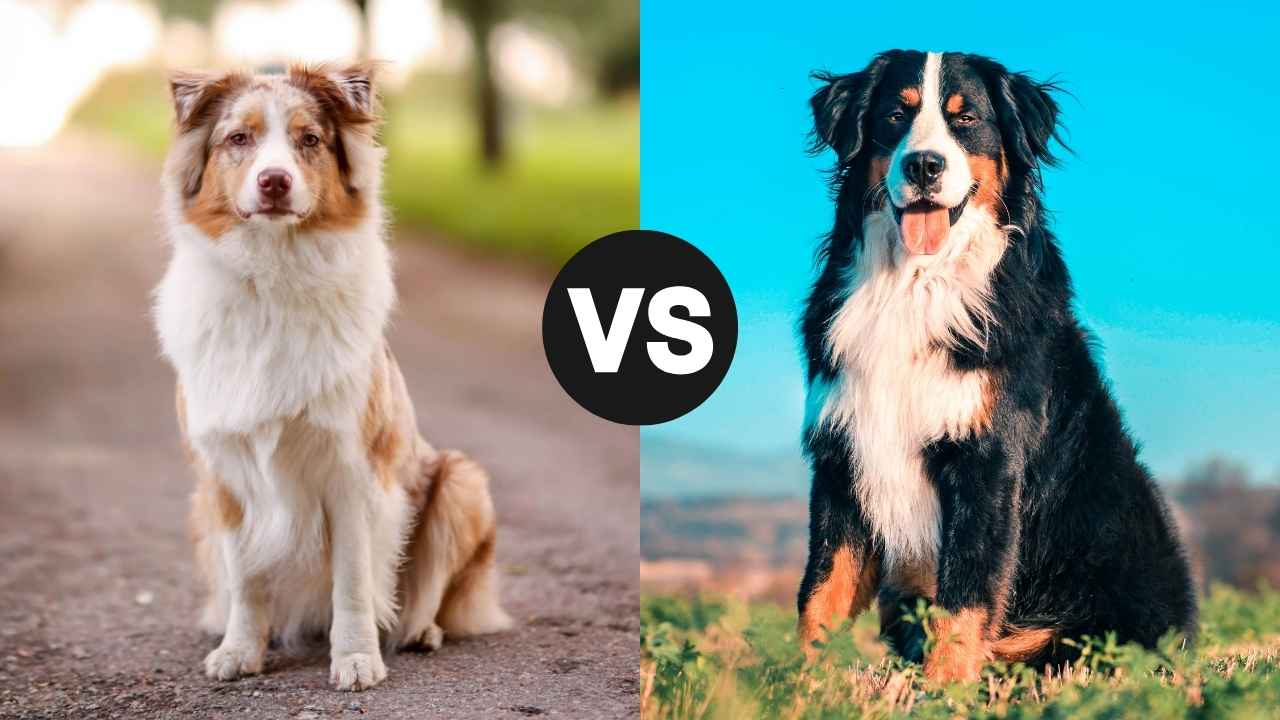Choosing between the Australian Shepherd and Bernese Mountain Dog can feel like picking between two furry bundles of joy—and that’s because it is! Both breeds are adored for their loyalty, intelligence, and heart-melting good looks, but they’re also quite different when it comes to energy levels, grooming needs, and overall lifestyle compatibility.
Whether you’re dreaming of an active hiking companion or a gentle giant to snuggle on the couch, understanding the unique traits of these two popular breeds can help you make the right choice. In this guide, we’ll dive into everything from size and temperament to training tips and care requirements.
If you’re a dog lover caught in the Aussie vs. Bernese debate, we’re here to make your decision a whole lot easier—and a little more fun. Let’s break down the pros, cons, and lovable quirks of each breed so you can find your perfect canine match!
Australian Shepherd vs. Bernese Mountain Dog
The Australian Shepherd is a high-energy herding breed known for its intelligence, agility, and striking merle coats. Despite its name, the breed was actually developed in the United States, where it gained popularity among ranchers and cowboys for its unmatched work ethic and herding instinct.
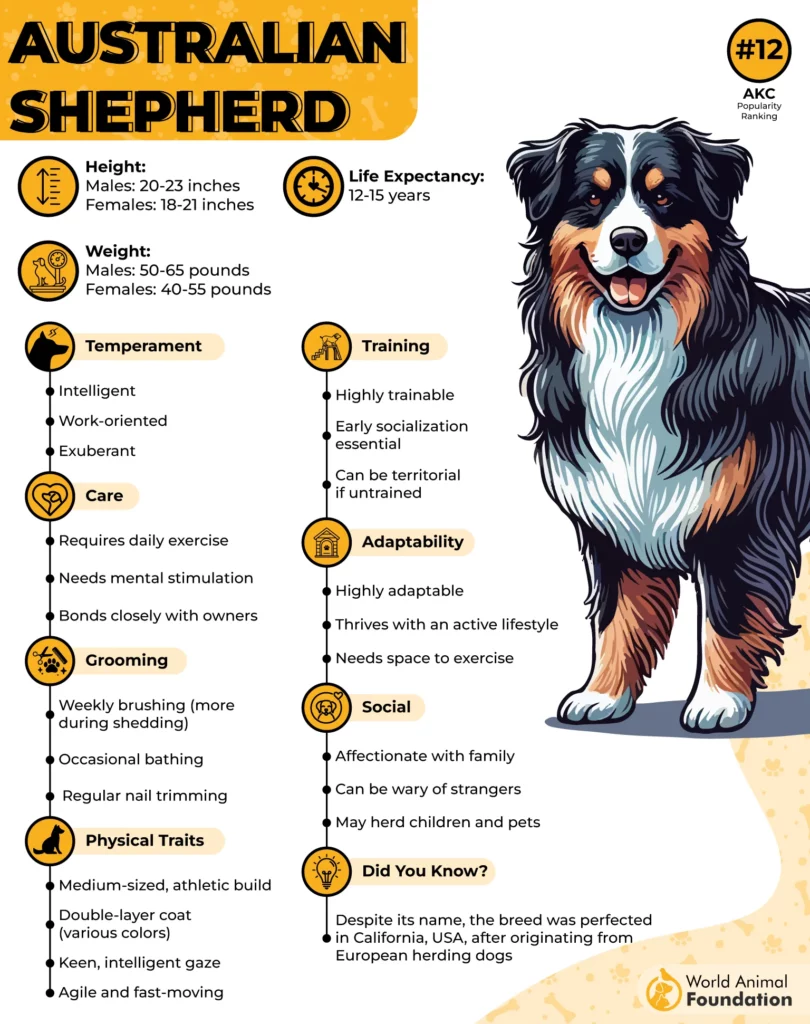
Recognized by AKC, Aussies are medium-sized dogs with bright, expressive eyes—often blue or multi-colored—and a sharp mind that thrives on activity and stimulation.
They’re quick learners, loyal to their families, and often excel in dog sports like agility, obedience, and frisbee. Without enough exercise and mental engagement, they can become bored and destructive, so they’re best suited to active households that can keep up with their pace.
On the other hand, the Bernese Mountain Dog hails from the Swiss Alps and was originally bred as a working farm dog, particularly for pulling carts and herding cattle. This breed is large, sturdy, and covered in a thick, tricolored coat that’s both beautiful and built for cold weather. Berners are known for their calm temperament, affectionate nature, and deep loyalty to their humans.
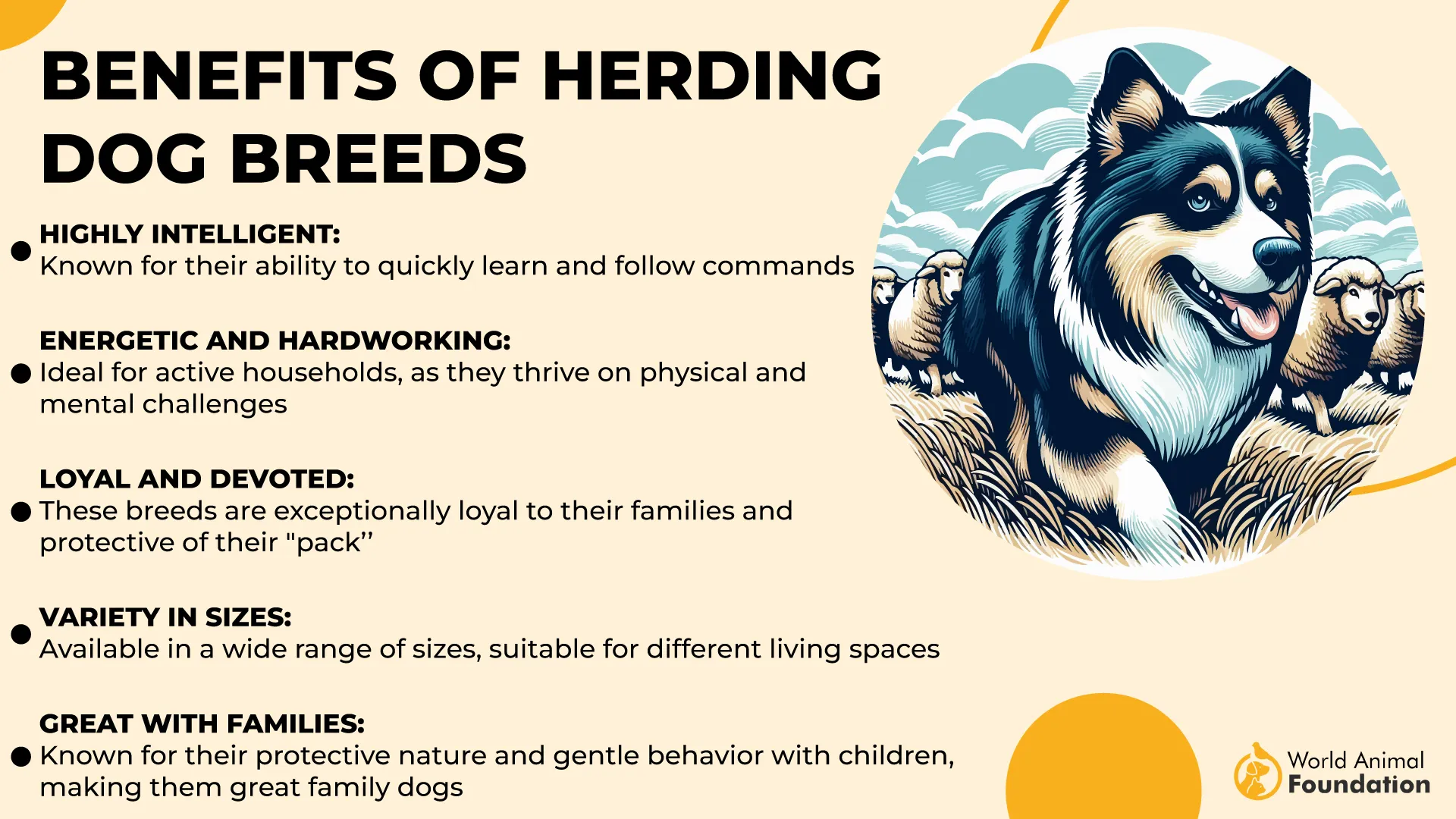
Unlike the Australian Shepherd, they’re generally more laid-back and less demanding in terms of mental stimulation, although they still enjoy daily walks, moderate exercise, and outdoor time. Their gentle disposition makes them wonderful companions for families, especially those with children.
While their size can be intimidating, they are often sweet-natured and easygoing, making them excellent pets for those seeking a more relaxed canine presence.
Australian Shepherd vs. Bernese Mountain Dog: Overall Size and Build
When comparing the Australian Shepherd and Bernese Mountain Dog in terms of overall size and build, the difference is immediately noticeable.
Purebred Australian Shepherds are medium-sized dogs, typically weighing between 40 to 65 pounds and standing about 18 to 23 inches tall at the shoulder. They have a lean, athletic frame built for speed, agility, and endurance—traits that align with their history as nimble herding dogs.
Their body is well-balanced, with a slightly longer-than-tall silhouette, giving them a sleek, agile appearance that suits their energetic personality.
In contrast, the Bernese Mountain Dog is significantly larger and more robust. Males can weigh between 85 to 115 pounds, while females generally fall between 70 to 95 pounds. They stand 23 to 27.5 inches tall and have a heavy, muscular build meant for strength and pulling power.

With their broad chests, sturdy legs, and thick coats, Berners have a majestic, imposing presence that reflects their origins as working dogs in the cold, mountainous regions of Switzerland.
Australian Shepherd vs. Bernese Mountain Dog: Coat Type and Shedding
When it comes to coat type and shedding, the Australian Shepherd and Bernese Mountain Dog comparison reveals two breeds with gorgeous coats, but very different grooming needs.
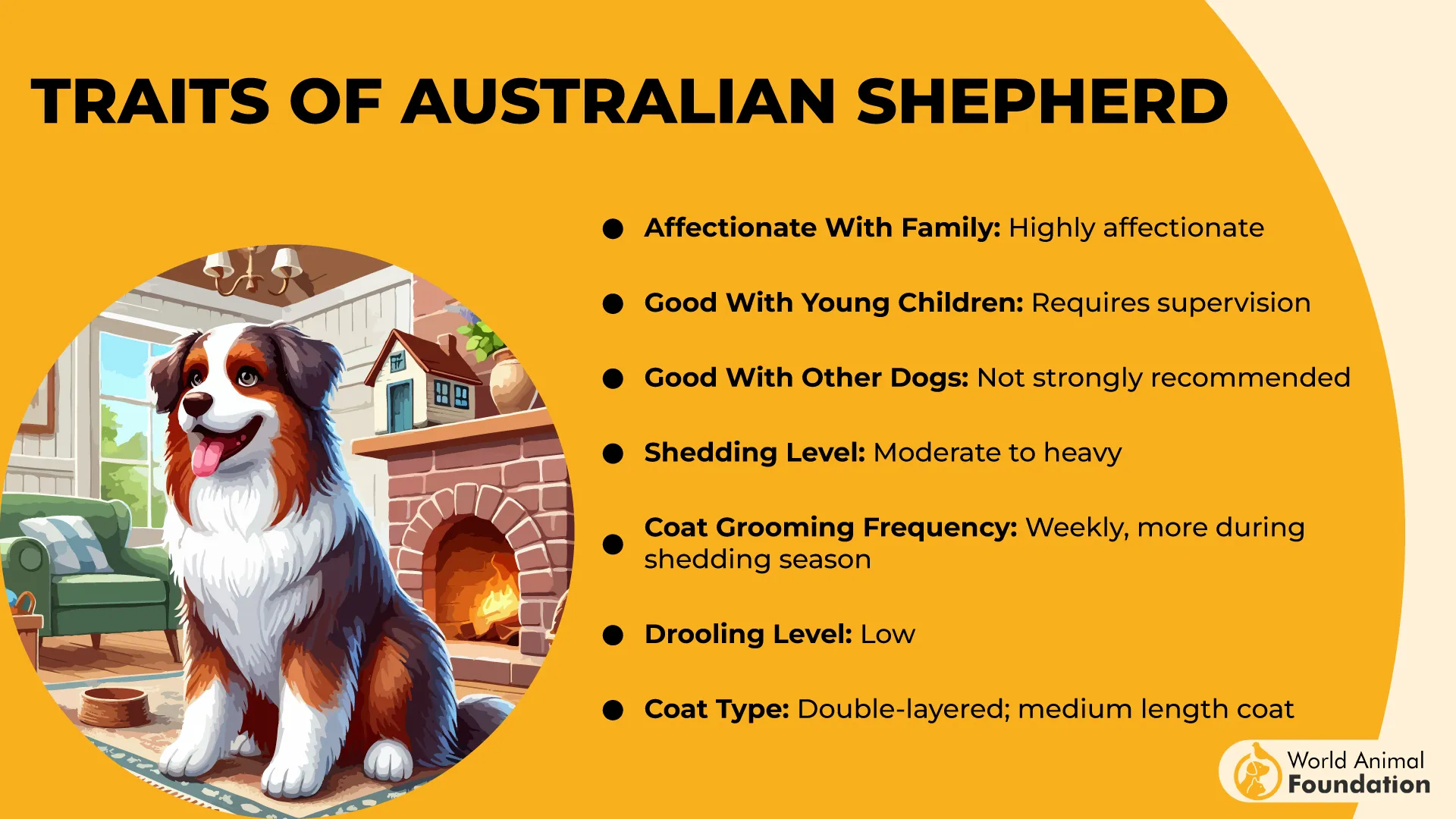
As noted by Britannica, Australian Shepherds are best known for their eye-catching blue merle and red merle patterns, though they also come in black and red with white markings. Their medium-length double coat is weather-resistant and slightly wavy or straight, requiring regular maintenance.
While not as bulky as some long-haired breeds, Aussies do shed—especially during shedding season—and need to be brushed weekly to prevent matting and reduce loose hair around the house.
Bernese Mountain Dogs, on the other hand, have long, thick, and luxurious double coats that are predominantly black with white markings and rust-colored tan points. Their white coat areas, especially on the chest and face, stand out beautifully against the darker shades.
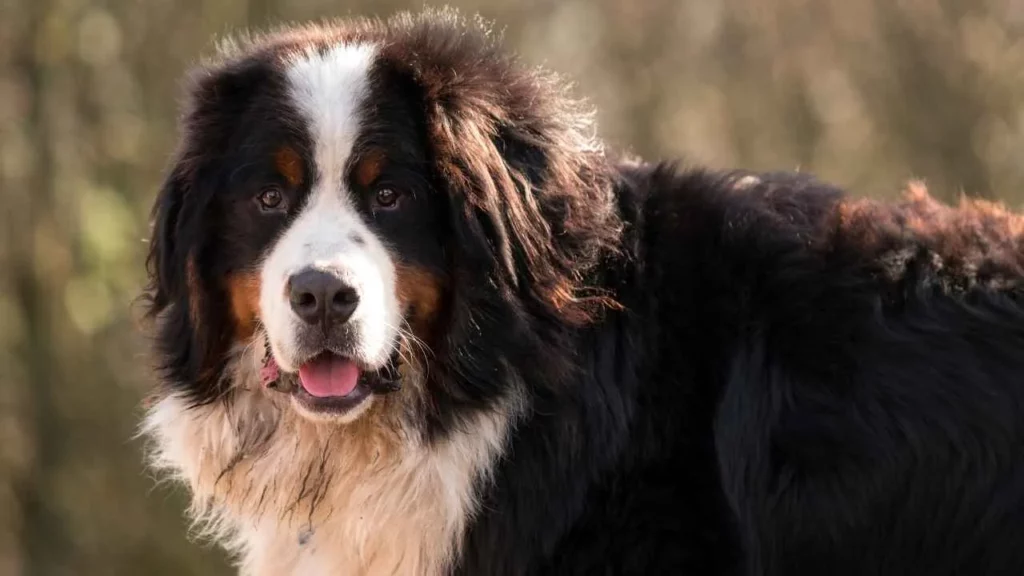
However, Berners are known to be heavy shedders year-round, with a noticeable increase in fur loss during seasonal changes. To keep their coats healthy and manageable, they also need to be brushed weekly, if not more frequently, during peak shedding times. Their size, combined with their thick fur, means a bit more grooming effort, but their stunning appearance makes it well worth the time.
Australian Shepherd vs. Bernese Mountain Dog: Drooling Tendencies
The Australian Shepherd is generally a low drooler. These energetic breed focuses more on movement, training, and mental engagement rather than drooling. While they may produce a small amount of saliva when excited, anticipating a treat, or after eating, Aussies are not known for excessive drooling.
This breed’s clean habits are part of their highly trainable and intelligent nature, making them easy to manage in terms of cleanliness. However, if an Australian Shepherd suddenly starts drooling excessively, it could be a sign of health issues, such as dental problems or even nausea, and a vet visit would be recommended to rule out any concerns.

On the other hand, the Bernese Mountain Dog, being a larger breed, is more prone to drooling. This breed tends to drool, especially when they are relaxed, anticipating food, or even while walking in warmer weather. Their large size and loose skin around the mouth can contribute to more saliva production.
While it’s common for Berners to drool, particularly around mealtimes or during periods of relaxation, excessive drooling could sometimes signal a health issue. For example, it could indicate a problem with their teeth, digestive issues, or even something more serious, like heatstroke in hot weather. If a Bernese Mountain Dog starts drooling more than usual or in unusual situations, it’s a good idea to consult a vet.
Australian Shepherd vs. Bernese Mountain Dog: Temperament
The Australian Shepherd is known for being an active and energetic dog, requiring plenty of exercise and mental stimulation. Aussies are incredibly smart and highly trainable, making them excel in obedience training and dog sports. They are intelligent and can quickly pick up commands, but their eagerness to work and explore means they need consistent interaction and tasks to keep them from becoming bored.
Aussies tend to thrive in family-oriented homes, where they are great companions to both kids and other dogs. However, their high energy can sometimes make them a bit too much for younger children if not properly trained. They tend to behave well in new environments, but may need time to adjust to strangers.
With socialization and positive reinforcement, they also get along well with cats and other animals, especially when raised together as a puppy. Their desire to please means they are often eager to work for treats, making training enjoyable for both dog and owner.
On the other hand, the Bernese Mountain Dog is more laid-back in temperament, making them well-suited for families seeking a calm yet loyal companion. While they may not have the same level of energetic drive as the Aussie, they are still intelligent and family-oriented, forming deep bonds with their owners.

While they may not have the same level of drive as the Australian Shepherd, they are still eager to please and can be highly trainable, especially if introduced to training early in their puppy years. Although Bernese Mountain Dogs are generally more relaxed, they still mix well with other dogs in dog parks and enjoy companionship.
Australian Shepherd vs. Bernese Mountain Dog: Life Expectancy
Australian Shepherds tend to live longer, with an average life span of 12 to 15 years. Their relatively moderate size and active lifestyle contribute to their longevity, but like many purebred dogs, they can be prone to certain conditions.

Common health concerns in Aussies include hip dysplasia, elbow dysplasia, and progressive retinal atrophy, all of which can impact their quality of life if not properly managed. Responsible ownership, regular vet checkups, and choosing a reputable breeder who screens for genetic issues can greatly improve an Aussie’s long-term health outlook.
PetMD states the Bernese Mountain Dog has a shorter average life expectancy, typically around 7 to 10 years. Their large size plays a significant role in this, as larger dog breeds often age faster and are more prone to joint-related conditions like hip and elbow dysplasia, as well as certain cancers, including histiocytic sarcoma, that affect multiple areas at the same time.

Because of their shorter lifespan and predisposition to health problems, it’s especially important to choose a Bernese pup from a breeder who prioritizes health screenings and responsible breeding practices. Early intervention and proactive care can make a big difference in both breeds’ overall well-being and lifespan.
Conclusion
In conclusion, the decision between the Miniature Australian Shepherd and the Bernese Mountain Dog depends on your preferences and lifestyle. The Aussie, with its German Shepherd-like intelligence and energy, thrives in active environments where it can be engaged both physically and mentally. Training an Aussie early is key to harnessing their drive and making them great companions.
On the other hand, the Bernese Mountain Dog offers a calmer, more relaxed temperament, making it a perfect fit for families seeking a gentle, loyal companion. Both breeds bring unique qualities, so your choice will depend on whether you’re looking for a highly energetic, trainable dog or a more laid-back family dog.


